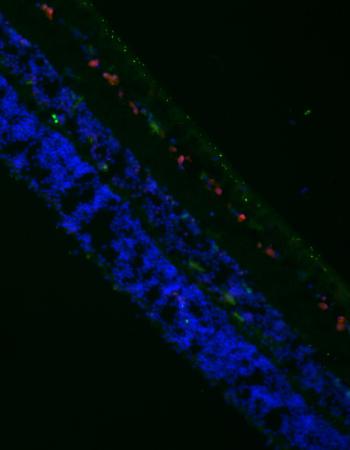Comparative study between the protective effects of Saudi and Egyptian antivenoms, alone or in combination with ion channel modulators, against deleterious actions of Leiurus quinquestriatus scorpion venom
Fatani, Amal J. . 2010
This study compared efficacy of two polyvalent antivenoms (Saudi Arabian and Egyptian), against lethality and pathophysiological changes of Leiurusquinquestriatus quinquestriatus (LQQ) scorpion venom in mice. Additionally, the study examined whether treatment with selected ion channelmodulators, lidocaine, nimodipine or amiodarone would be effective, alone or combined with the antivenoms. The protein concentration of the Saudiantivenom was 1/3 of Egyptian, indicating lesser immunogenicity, while both preservative contents were within limits. In immunodiffusion experiments, both exhibited prominent precipitin bands indicating high concentrations of specific antibodies. Neutralizing capacities (60-70 LD(50)) stated on labels were confirmed. Both antivenoms significantly (P < 0.001) prolonged survival time (from 26.9 +/- 1.18 min, 100% dead with venom to 224-300 min, 0-30% dead) of envenomed mice, whether injected iv before or 5 min after venom. Injection of either antivenom plus ion channel modulators, gave comparable results to that observed in mice treated with antivenoms alone. The Na(+) channel blocker lidocaine and the Ca(2+) channel blocker nimodipine on their own significantly protected the animals (P < 0.05), but to a lesser extent. The two antivenoms, significantly ameliorated thevenom-evoked changes in serum LDH (P < 0.001) and CKMB (P < 0.01) plus cardiac TNFalpha and nitrate/nitrite levels (P < 0.001). When combined with lidocaine or nimodipine, the effects were not greater than antivenom alone. Moreover, the antivenoms ameliorated characteristic venom-evoked changes in the isolated perfused Langendorff hearts. Lidocaine and amiodarone were more effective than nimodipine. In Conclusion both Saudi andEgyptian antivenoms protected mice from the pathological and lethal effects of LQQ scorpion. Sodium and calcium channel blockers, lidocaine and nimodipine, may be useful when antivenoms are not available.

PURPOSE:
Elevated intraocular pressure (IOP) is a major risk factor for glaucoma. One consequence of raised IOP is that ocular tissues are subjected to increased hydrostatic pressure (HP).…

Education in the ethical conduct of research that is acquired by postgraduate students is a key component
for their professional development in scientifi c and academic communities. This…

This study compared efficacy of two polyvalent antivenoms (Saudi Arabian and Egyptian), against lethality and pathophysiological changes of Leiurusquinquestriatus quinquestriatus (LQQ) scorpion …

